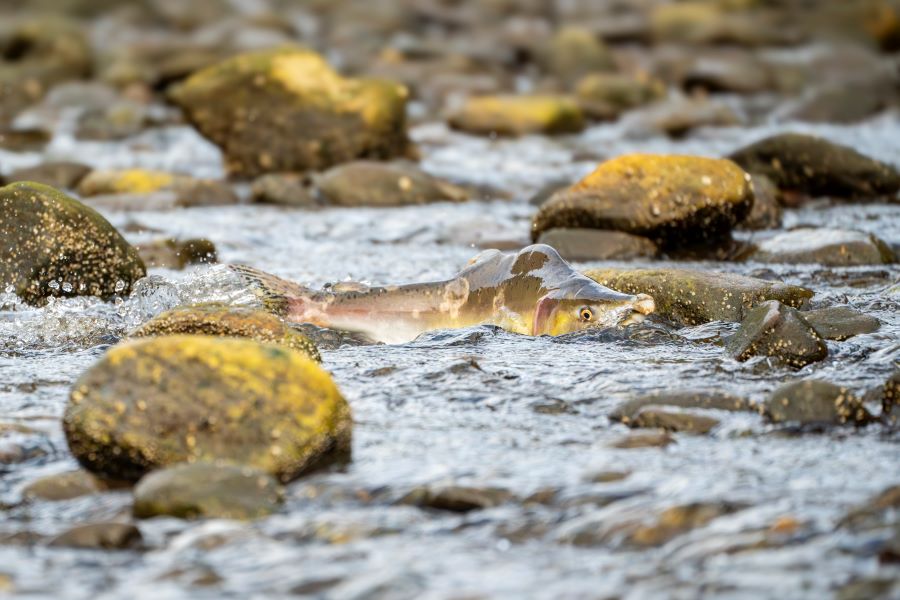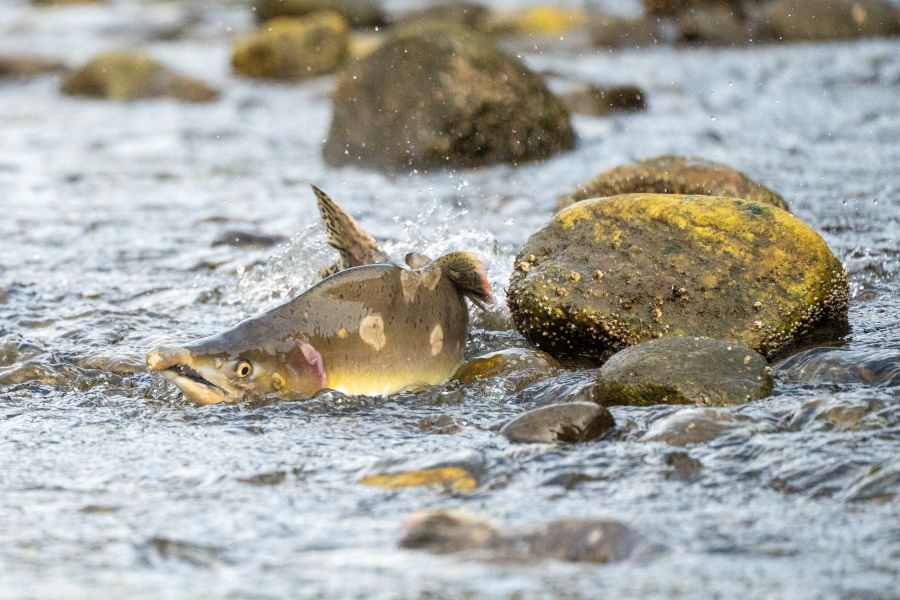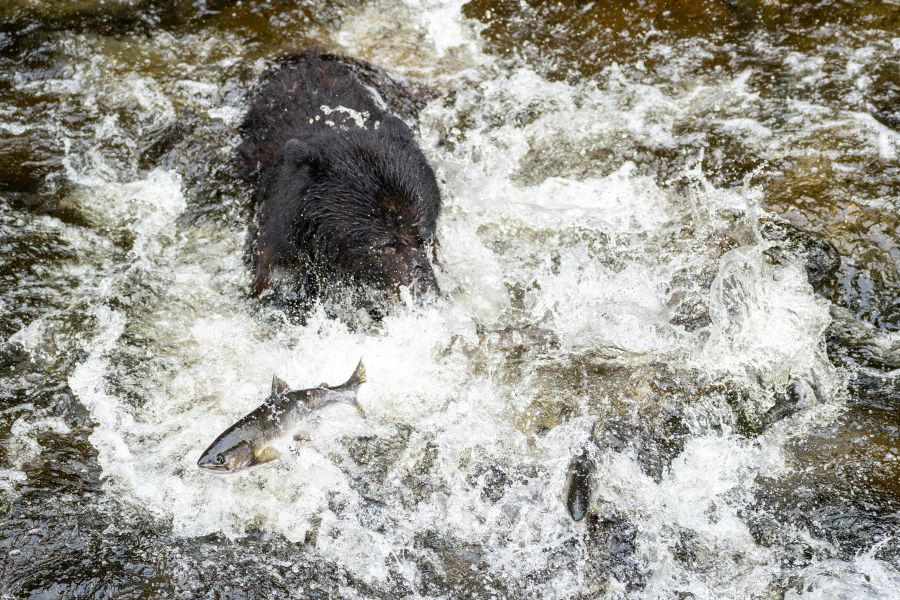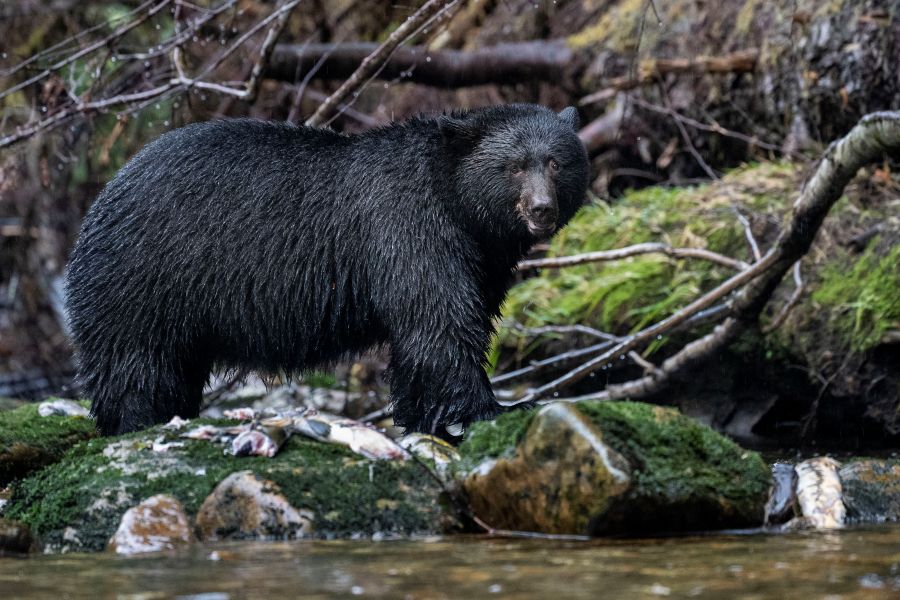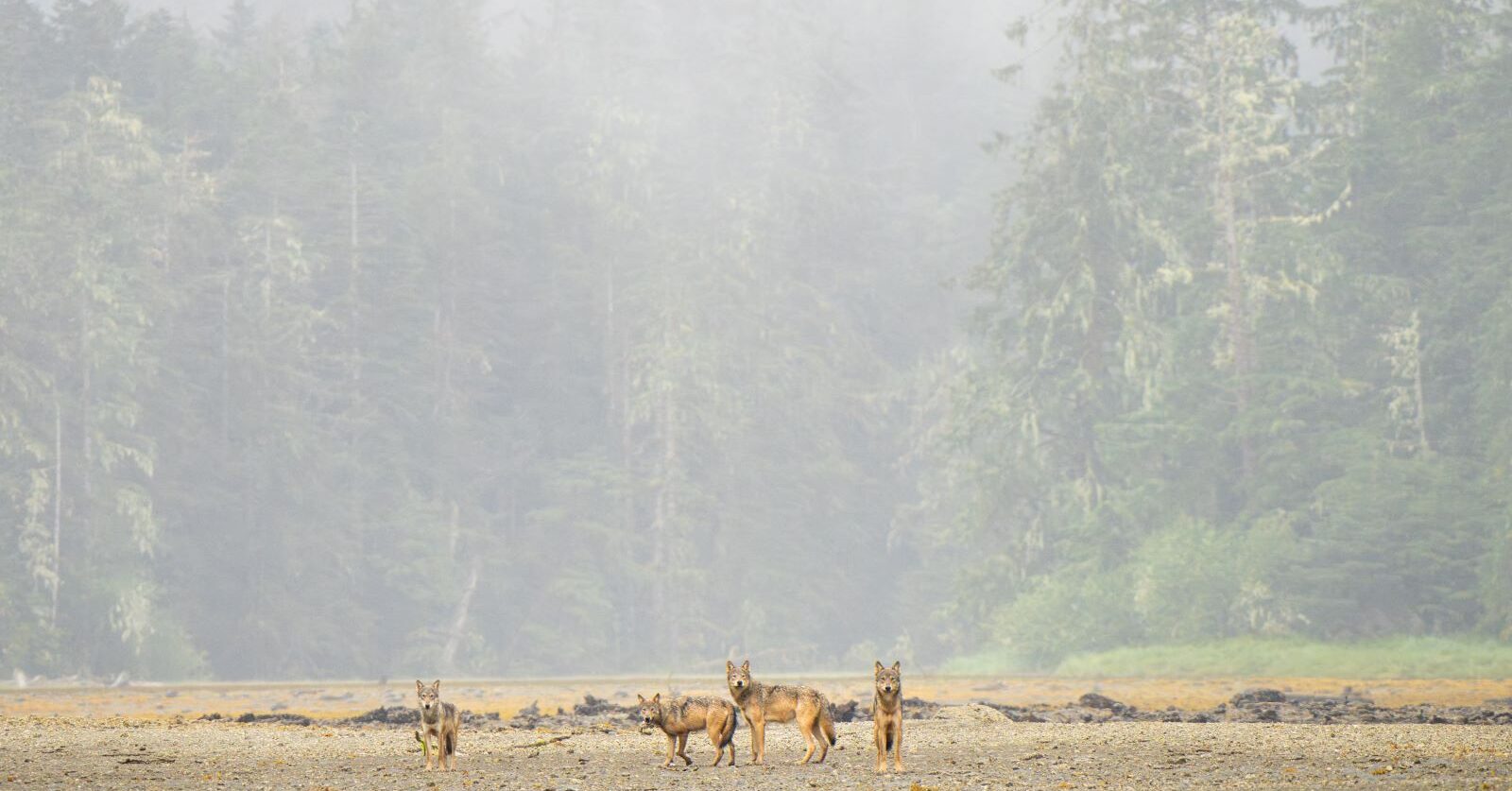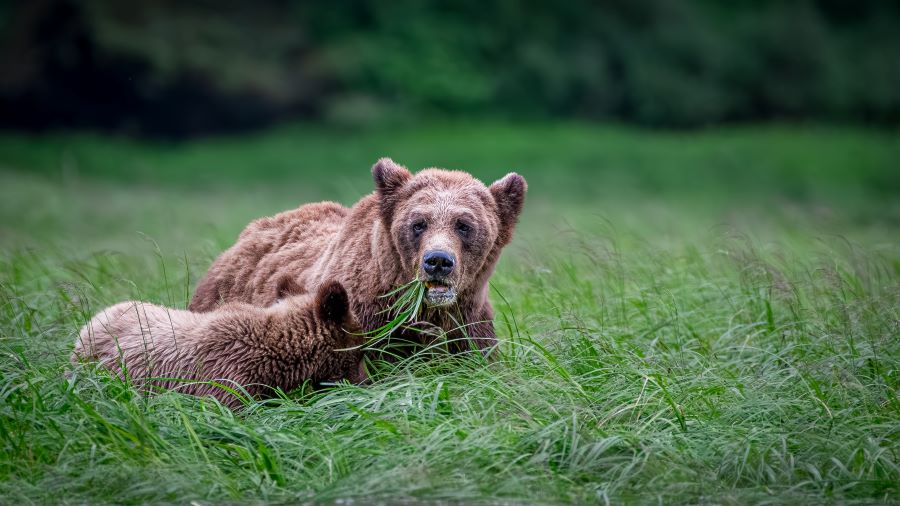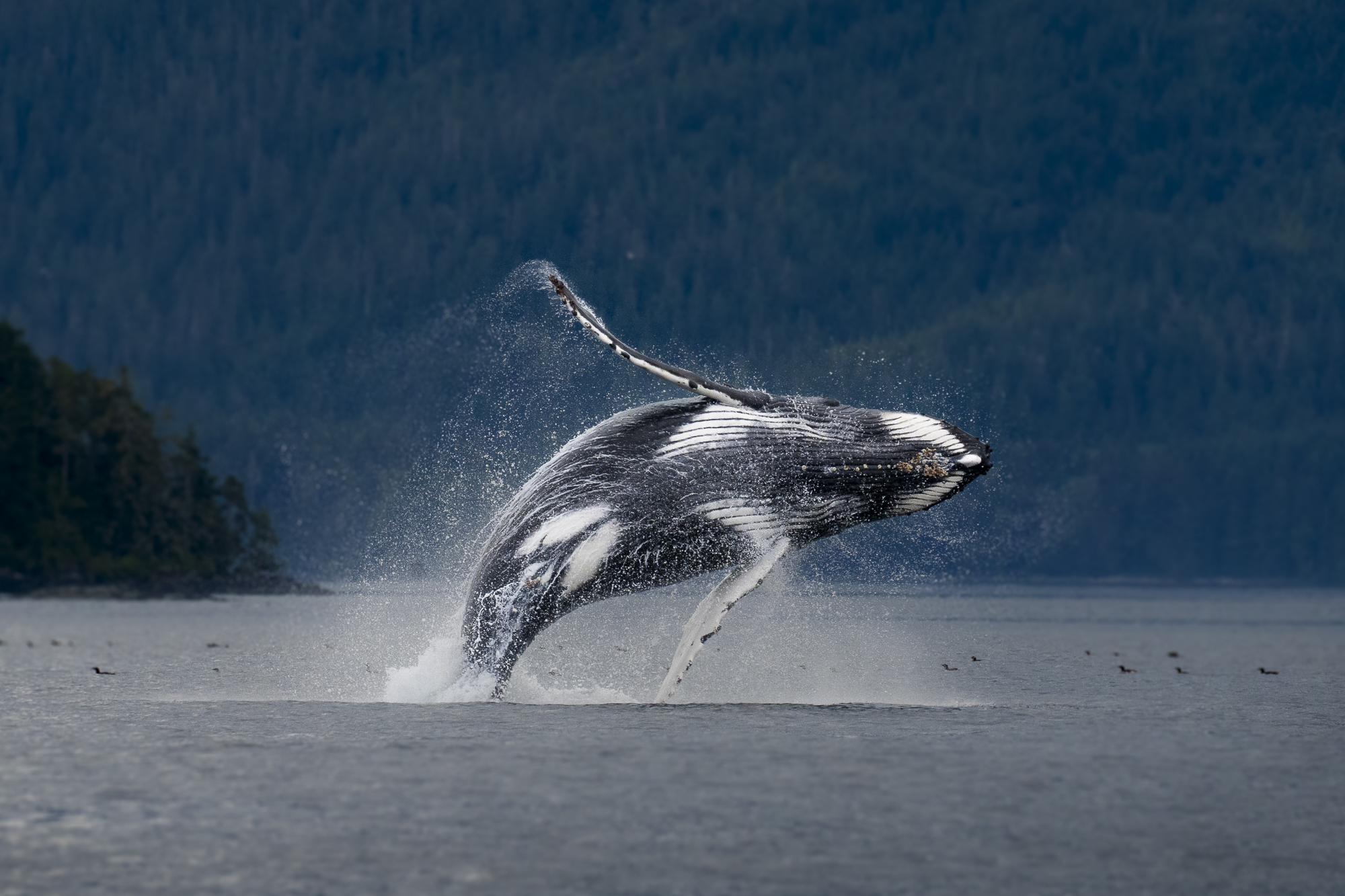Pacific salmon are a keystone species for the Pacific Northwest region. As an anadromous species – that is, a species that migrates between fresh and saltwater – the life cycle of salmon is crucial to the movement of nutrients from the ocean to the terrestrial habitat.
There are five species of Pacific salmon that live in British Columbia waters: Chinook, Coho, Chum, Sockeye, and Pink. Although life cycle timelines and specifics vary species to species, we can generalize: all species begin their lives in freshwater rivers, streams, or lakes; then move to the ocean to live out their adult lives; before finally returning upriver to reproduce:
Egg & Alevin
In a shallow gravel depression at the bottom of a stream or lakebed, thousands of eggs lay in wait through the winter. Incubation time is typically about 2-3 months, depending on factors such as water temperature, oxygen levels, and species. Existence for these eggs is already a challenge: in addition to needing clean oxygenated water and appropriate conditions for embryo development, the eggs are very fragile and also need to survive simply being eaten or damaged.
Upon hatching in early spring, they are known as alevin. They will stay in the nest – also called a redd – for the following weeks. Learning to swim and navigate the environment, they grow with the help of the nutrients from the yolk sac still attached to their body.
Fry
Once the yolk sac is fully absorbed, the alevin is officially a fry. Emerging from the protection of the gravel nest, the salmon fry feeds on small prey such as insects and plankton in the calm waters of the lake or stream while attempting to avoid predation by birds and larger fish.
Smolt
As the fry continues to grow, it moves downstream closer to the ocean. Living in the brackish water of estuaries, juvenile salmon are known as smolts as they adapt to living in saltwater conditions. There is no rigid timeline to this adaptation process – known as “smoltification” – but it involves physiological, morphological, and behavioral changes which will allow the salmon to hopefully survive life in the ocean.
Adult
Fewer than four smolts from each nest will become adults and a salmon’s life in the open ocean isn’t any easier. During the 1-7 years (depending on the species) they spend at sea and the thousands of kilometers they travel during this time, they must avoid many threats, including predation, the fishing industry, disease, and more.
The population of different stocks of fish (fish living in the same geographic area) cycles from year to year as a result of these challenges. There are also longer-term population cycles linked to ocean conditions that affect survival during migration.
Spawning
The adult salmon will eventually migrate back to their natal river. It’s still a mystery how they manage to do this, but theories suggest a combination of electromagnetic current, chemical signatures, and genetic coding.
In general, salmon will begin to gather at the mouth of rivers from late summer through fall. However, population stocks of different species do spawn at varying times of year – for instance, pink salmon spawn in July and August at Anan Creek in Southeast Alaska. Waiting in the estuary, they adapt back to living in fresh water and wait for water levels to reach a sufficient height to make the journey upstream possible.
Once the salmon has reached fresh water, it stops eating and survives off the energy reserves of its fat, muscle, and organs. The transition back to fresh water and grueling journey upstream is marked by the salmon’s body changing from silver to colourful shades of red and green. This transformation may also be accompanied by the development of humped backs, hooked jaws, and canine-like teeth.
After fighting their way upstream – avoiding obstacles, bears, and other predators – the salmon will finally reach the spawning grounds where competition is fierce. Using her tail, females will dig nests (redds) in the gravel and defend prime territory, while males compete for mating privileges. Eventually, upon spawning, eggs and milt will be deposited simultaneously to settle into the gravel hollow and the fertilized eggs will be covered with gravel for protection.
End of Life
As a semelparous species, most salmon die within a few days of spawning, though some may survive for weeks as their bodies slowly deteriorate.
Approximately less than 1% of eggs survive onto the next generation. However, for the offspring that do, they will go on to repeat the cycle, with each subsequent generation supplying essential nutrients to sustain the ecosystem and the vast number of creatures that live within it.
